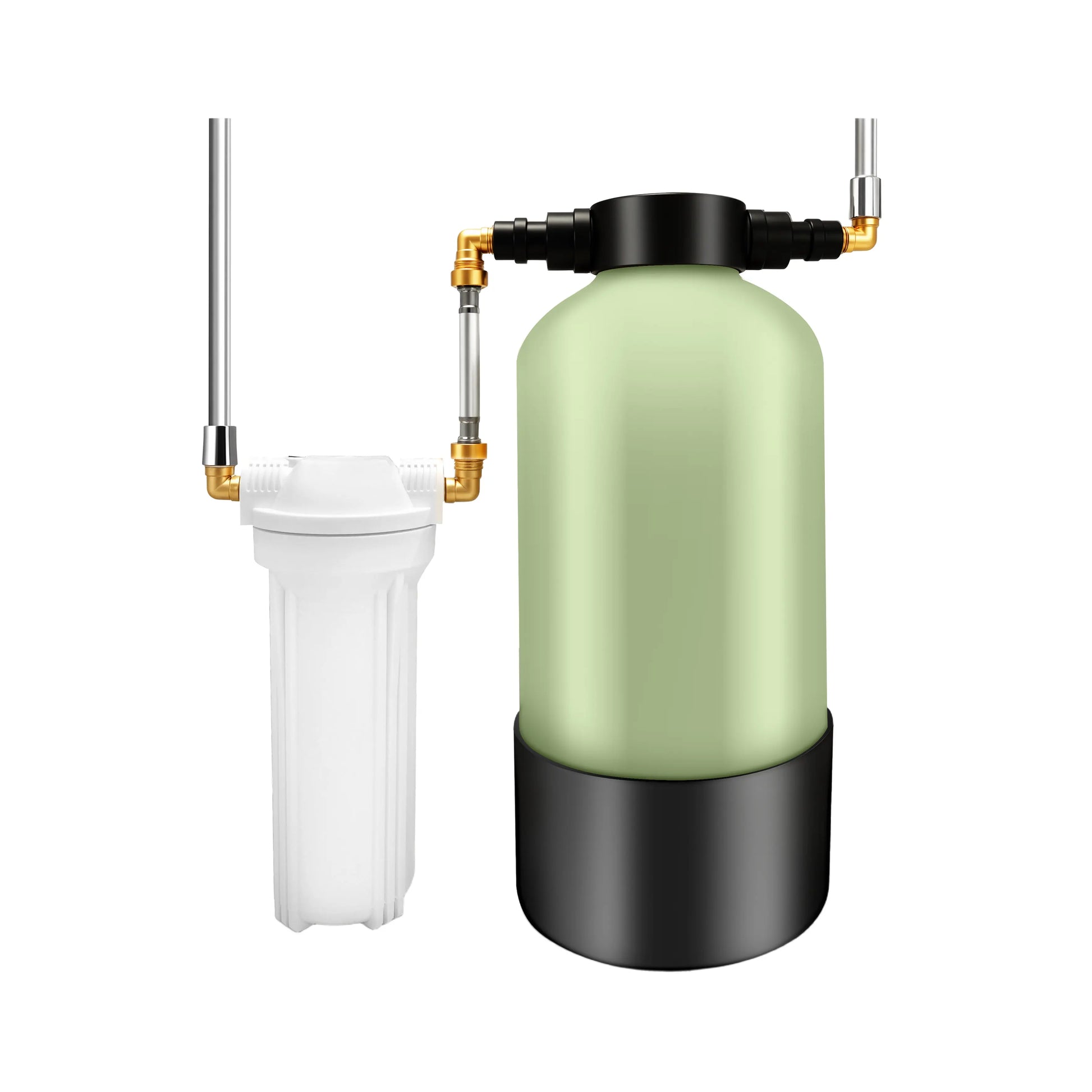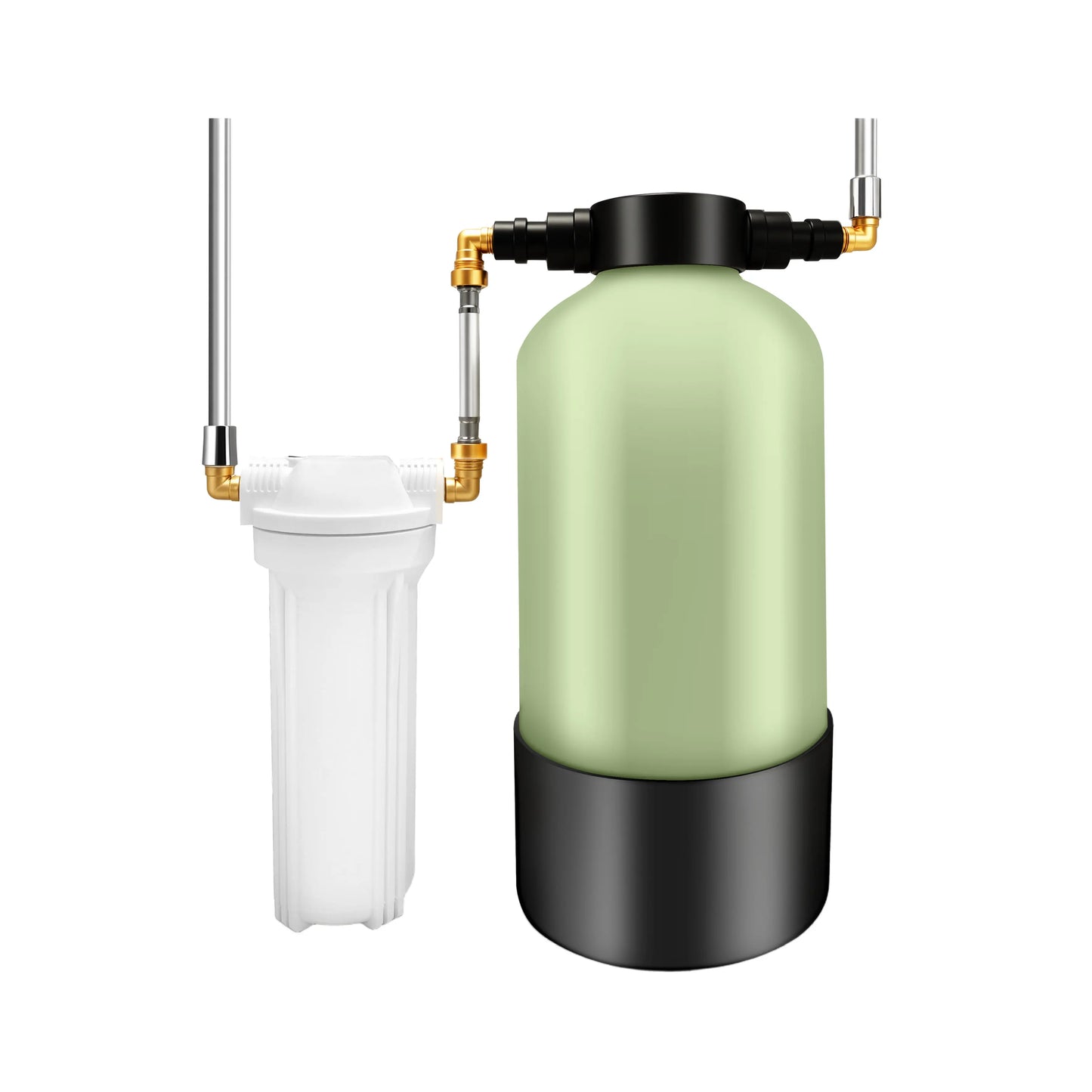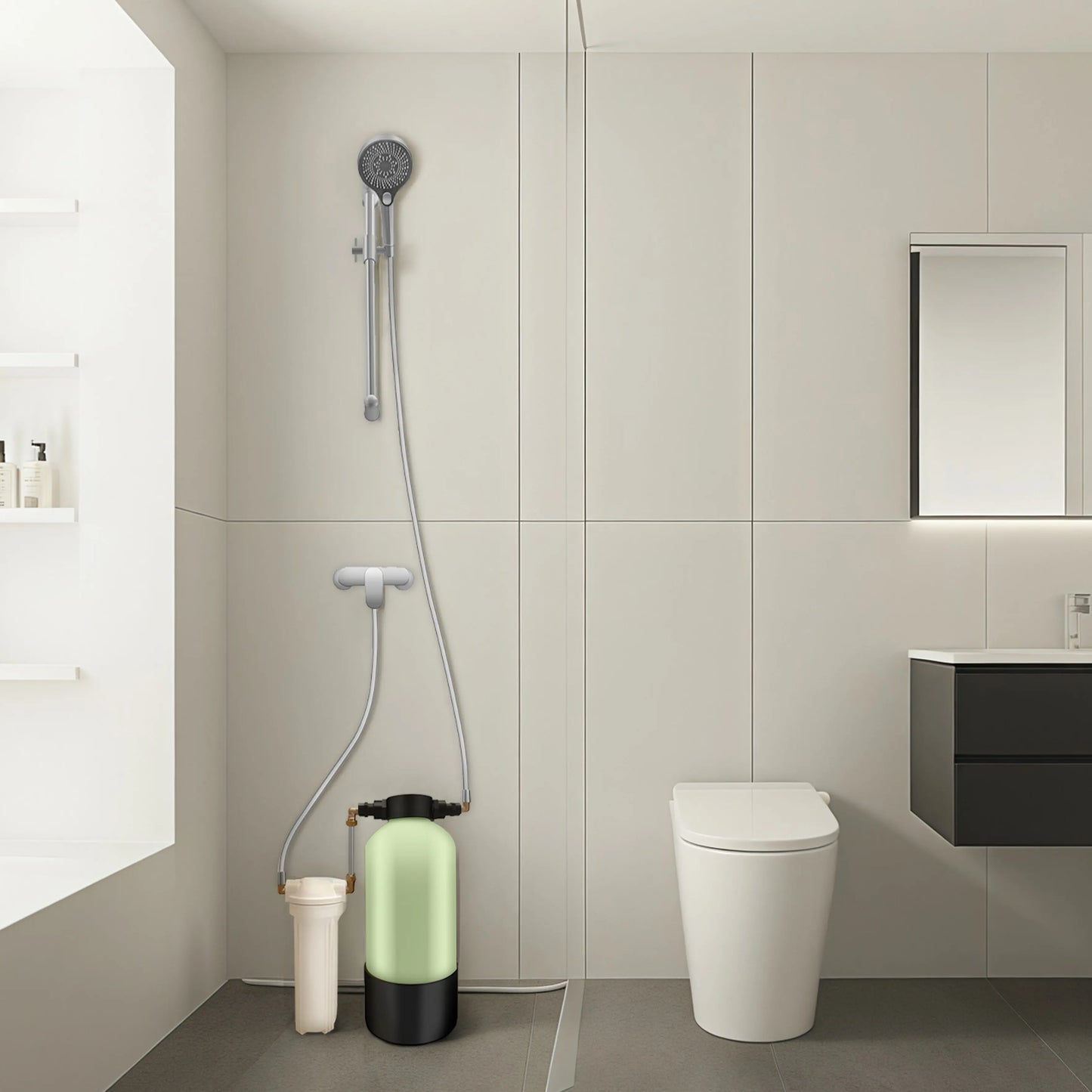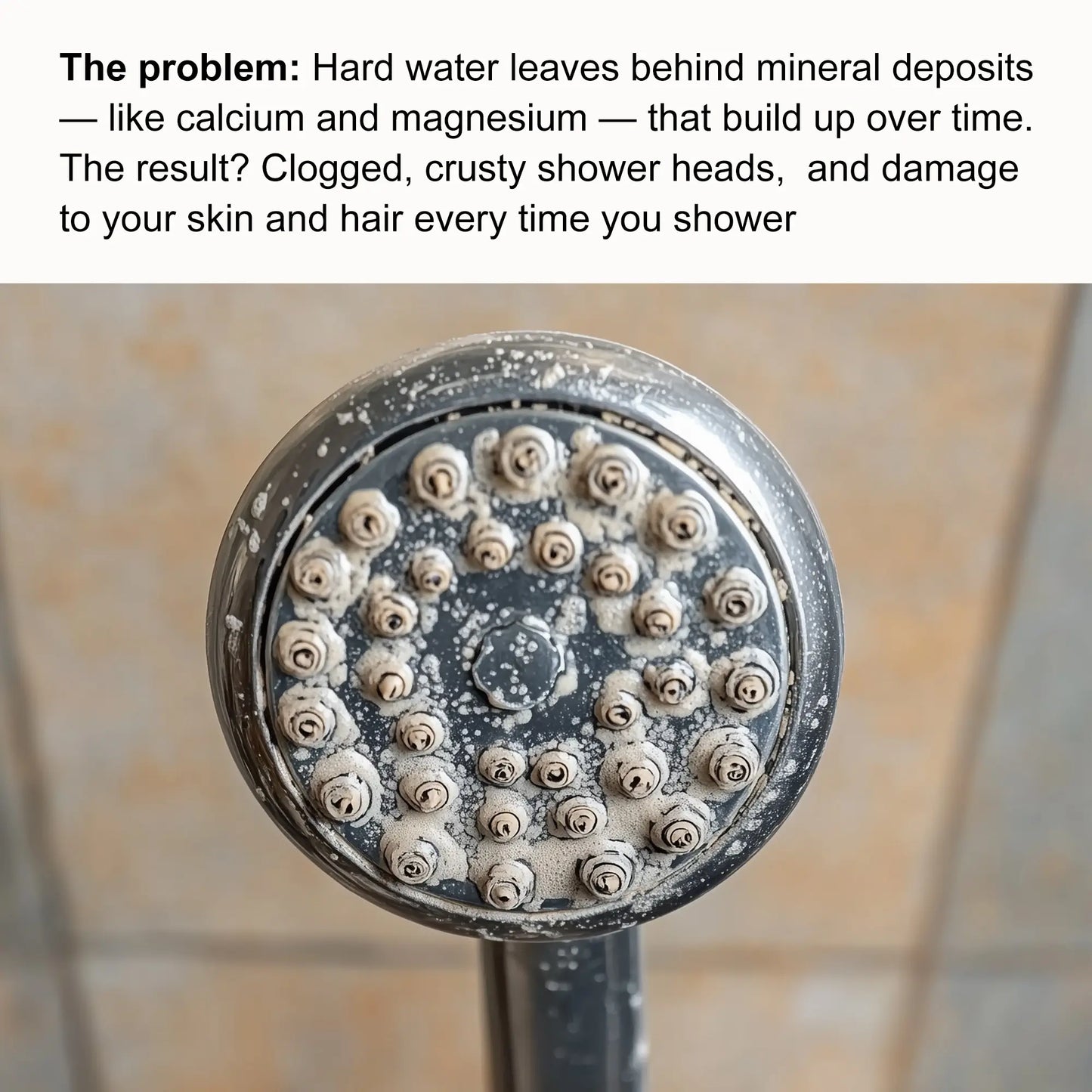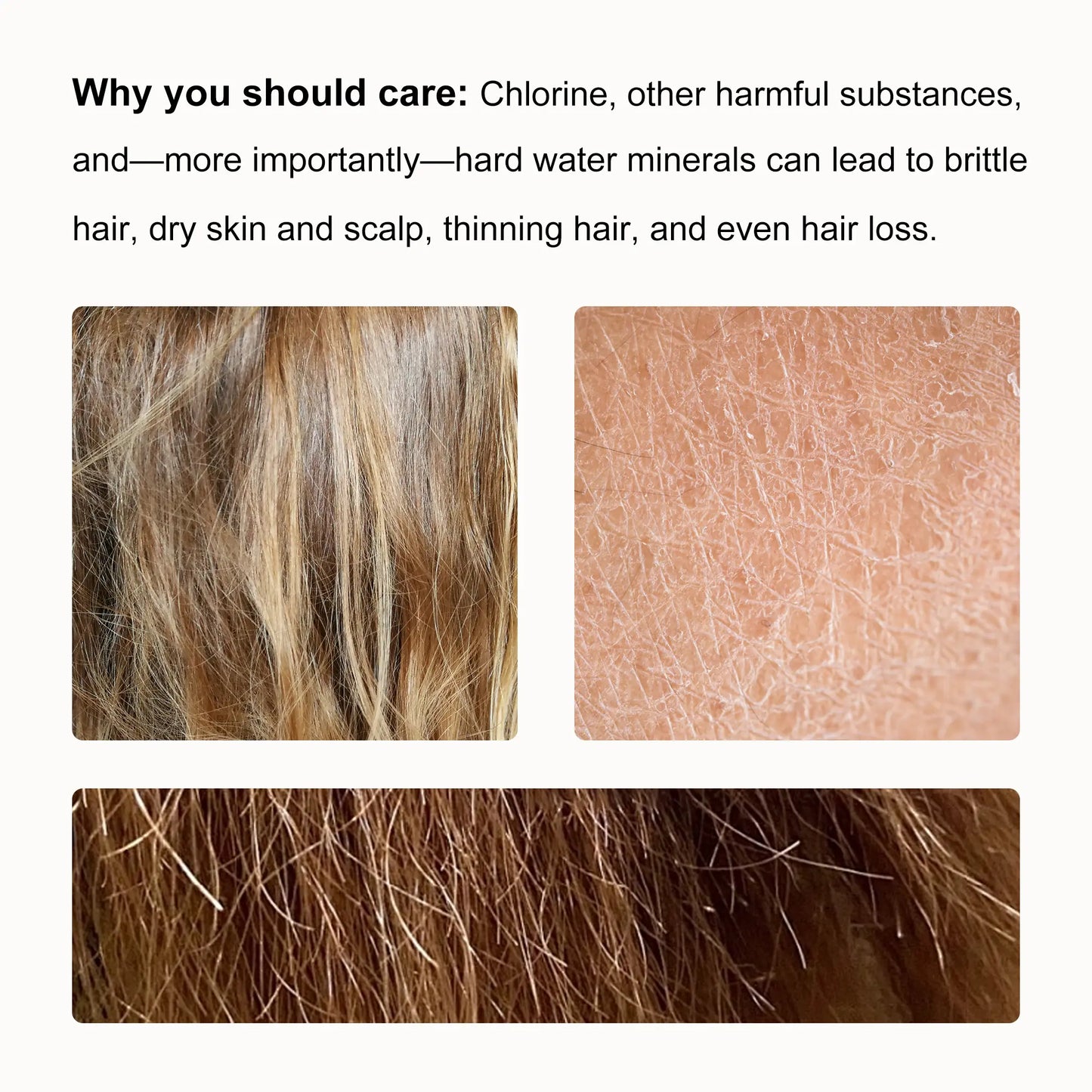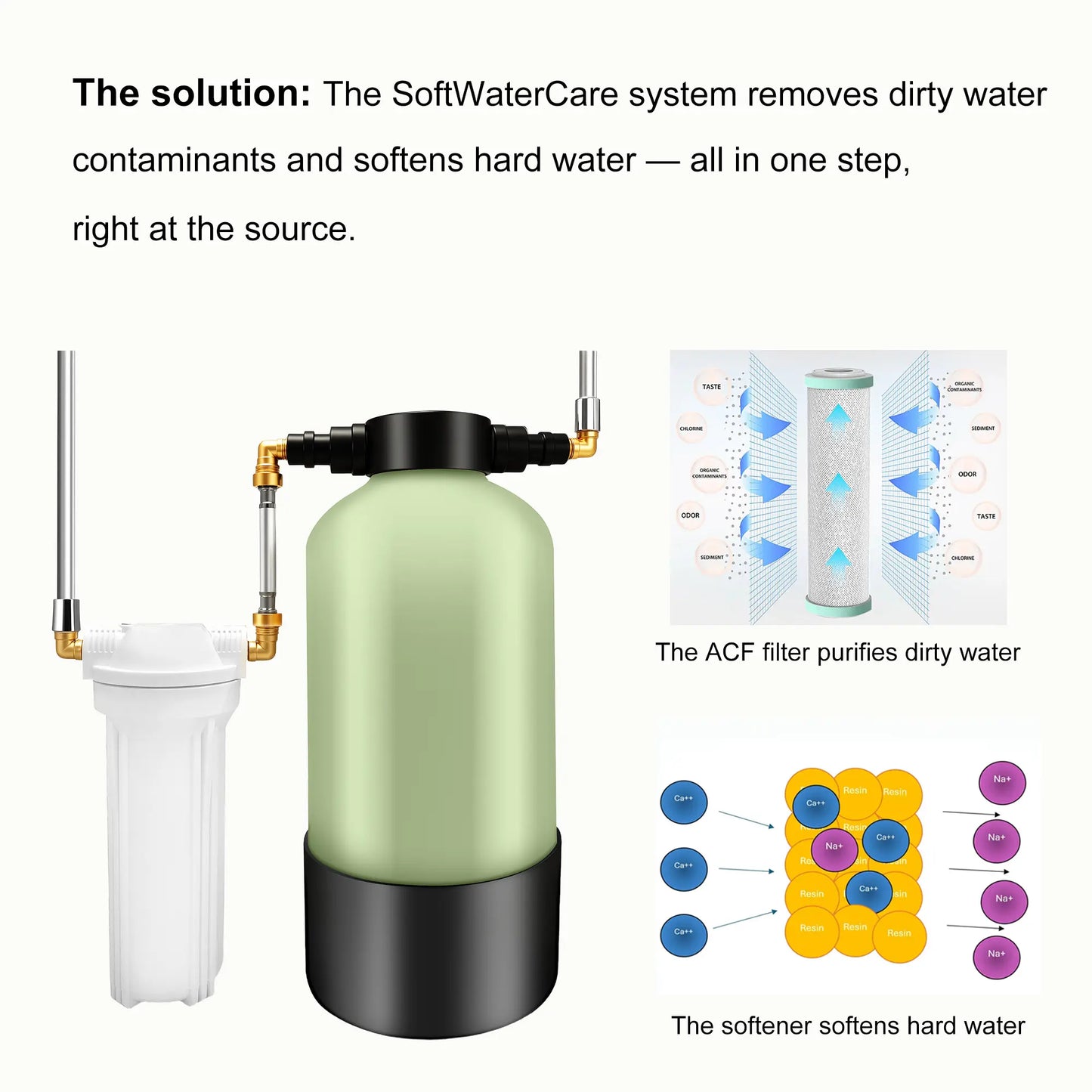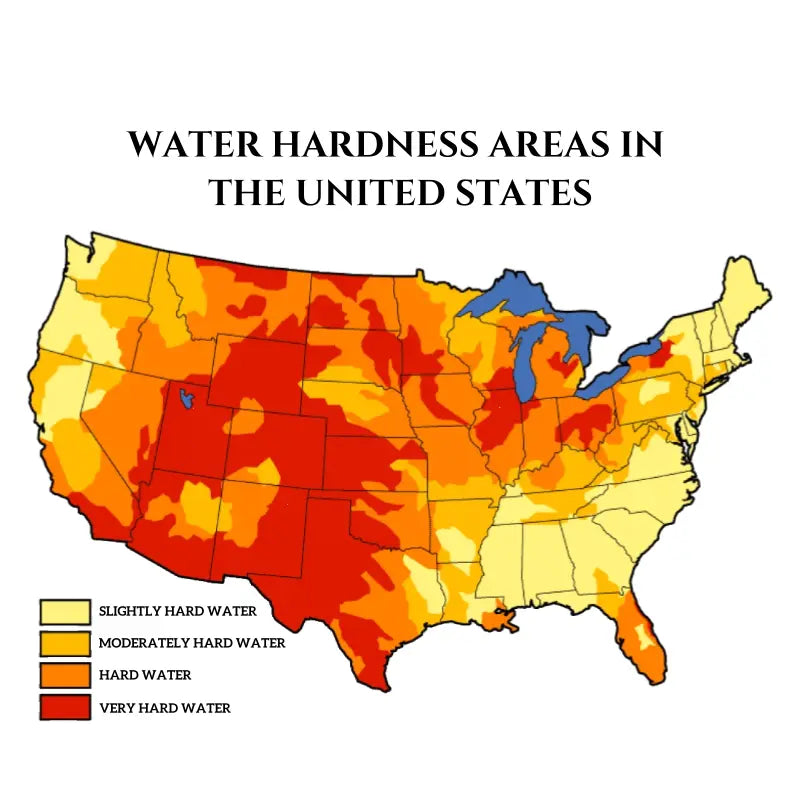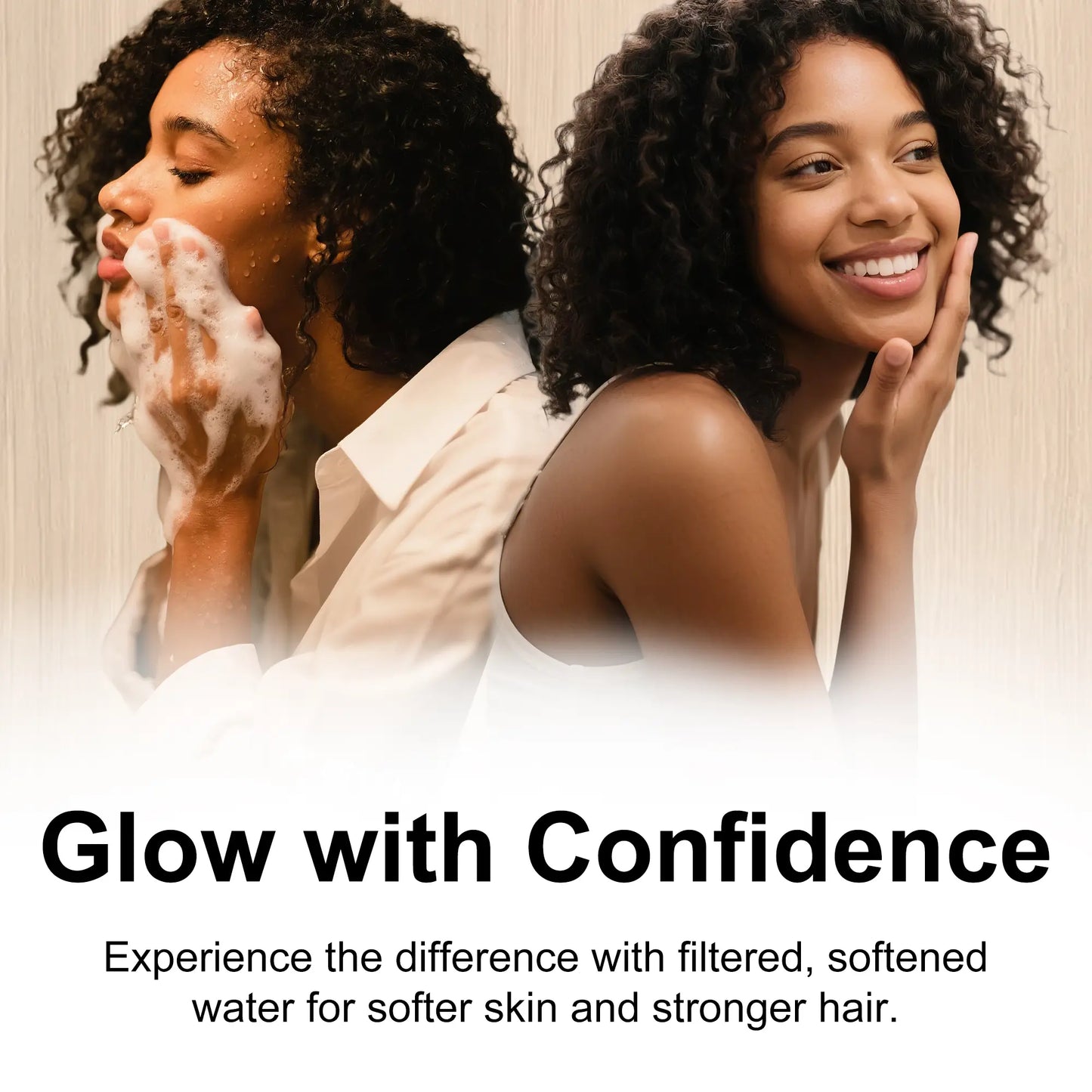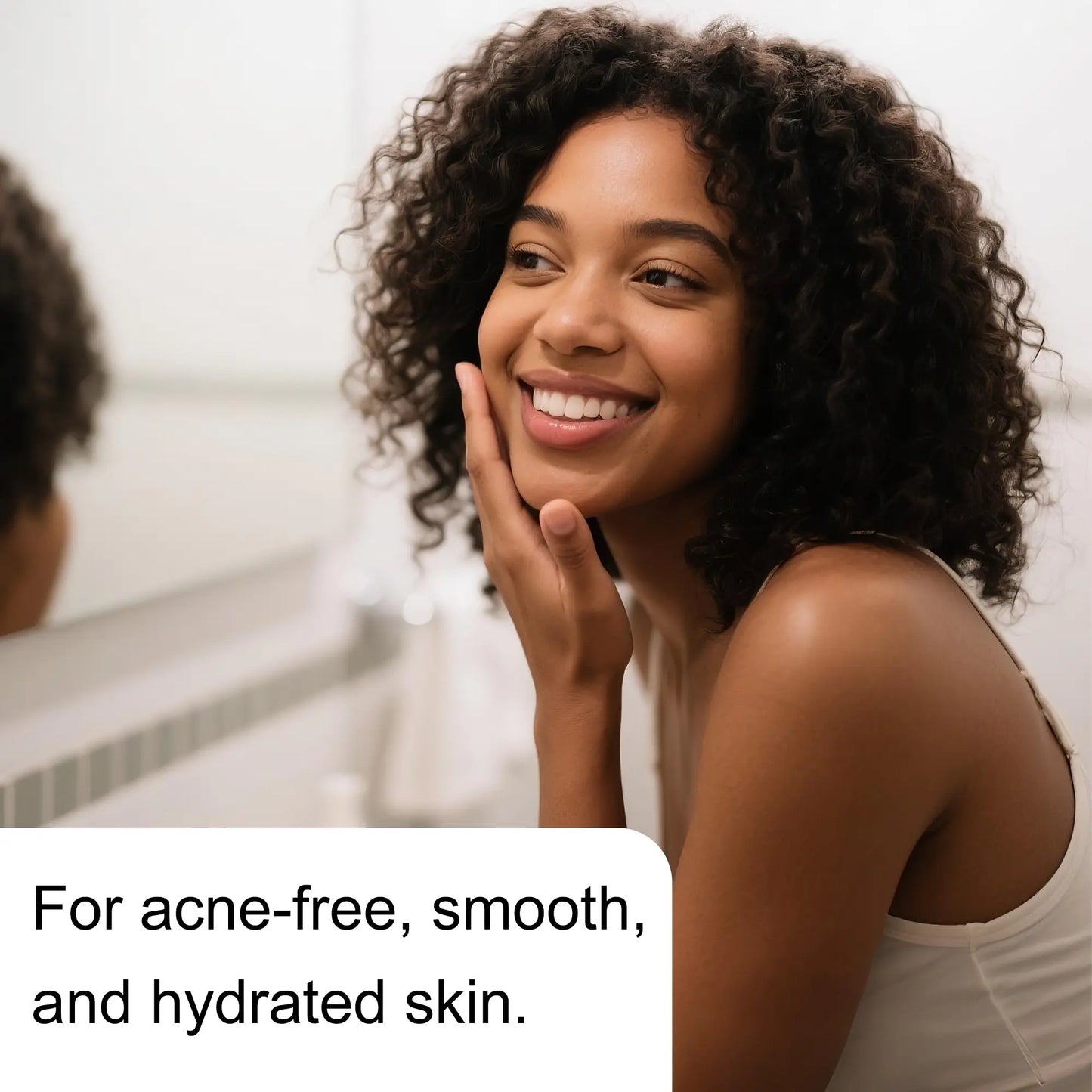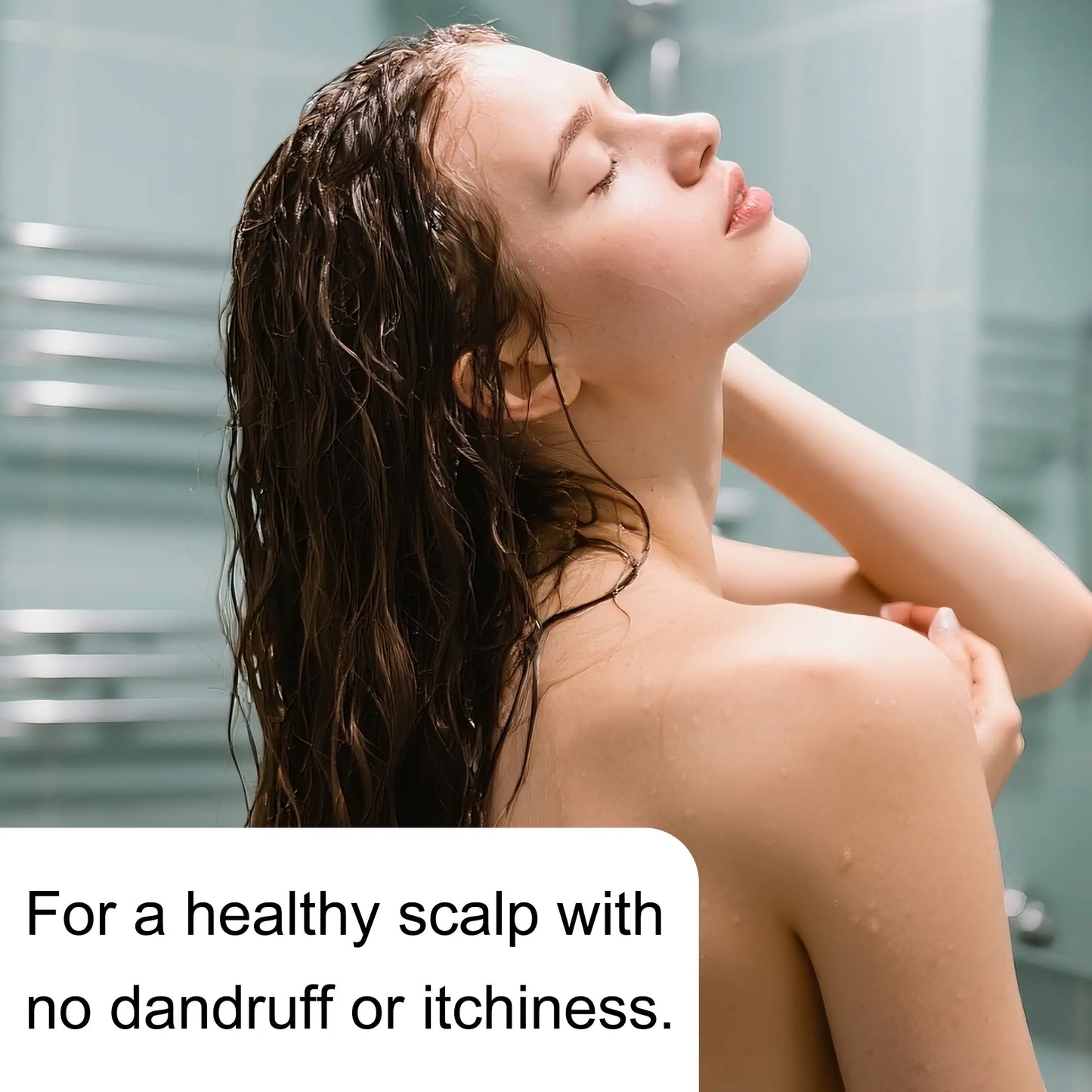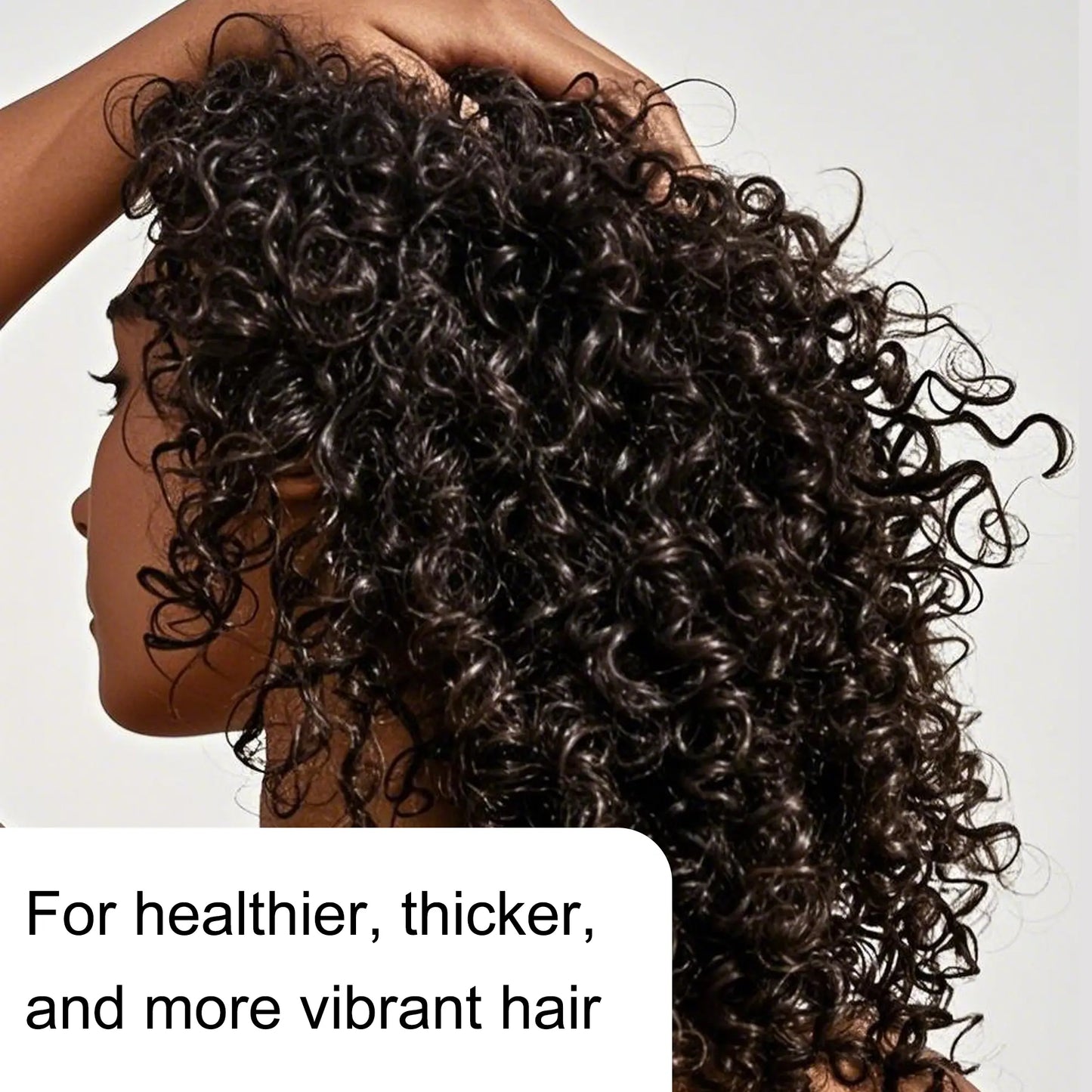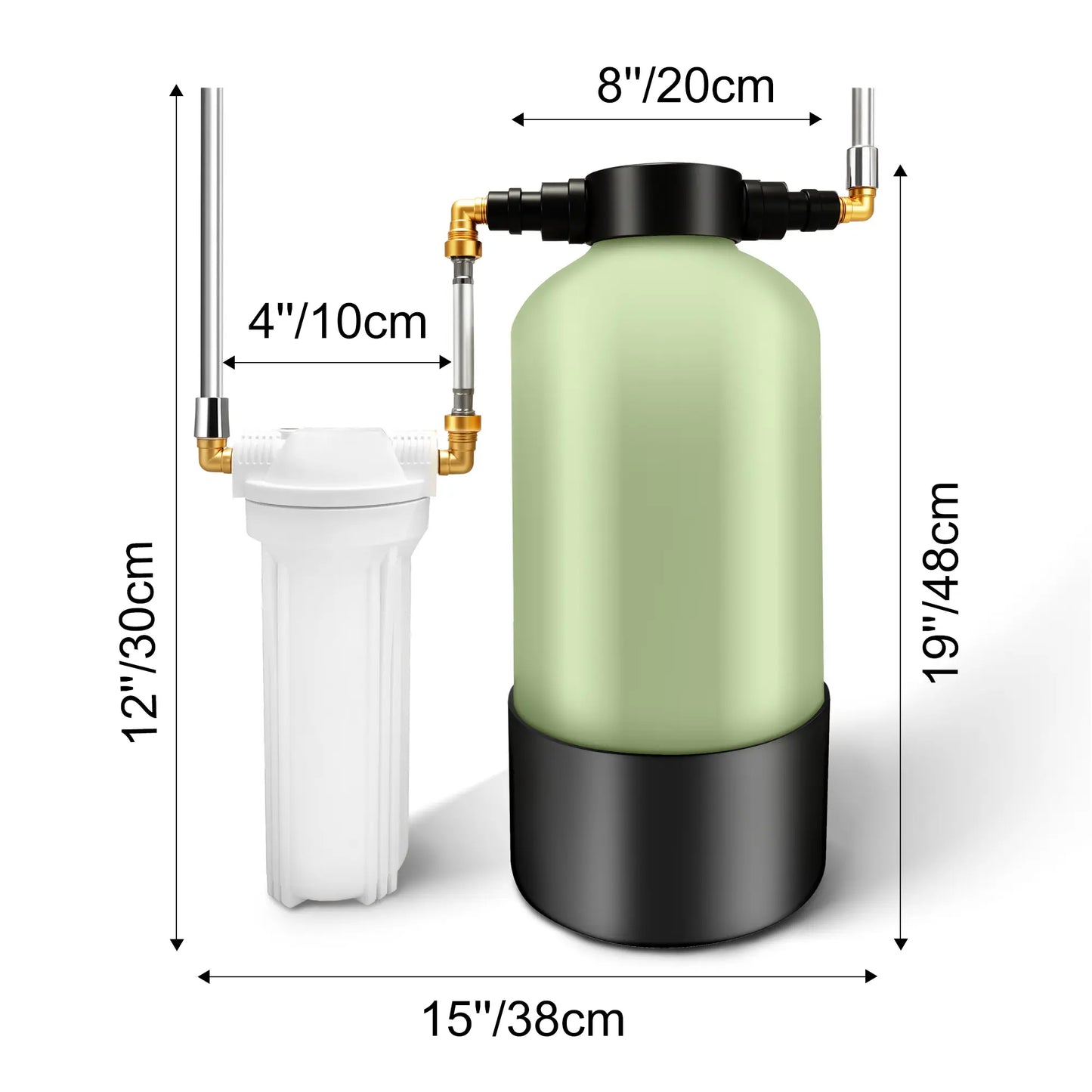If you’ve ever stared at your collection of half-used shampoo bottles, wondering why none of them seem to work, you’re not alone. Maybe your hair feels heavy even right after washing. Maybe it's dull, brittle, frizzy, or full of split ends. So you switch brands. You buy the expensive stuff. You avoid sulfates, silicones, and parabens. You follow curly girl methods or glass hair routines. But no matter how much product you slather on, your hair never seems quite right.
Here’s the inconvenient truth: it might not be your shampoo. It might not be your conditioner. It might not even be your hair.
It might be your water.

The Cycle of Hair Care Disappointment
Let’s back up. The shampoo industry thrives on a cycle of trial and error. Most of us cycle through product after product looking for that elusive perfect hair day. And marketers know this—they dangle buzzwords like “hydrating,” “reparative,” and “anti-frizz,” promising instant transformations.
But if you’ve ever found that no product really works or only works for a week or two before your hair “gets used to it,” you’re not imagining things.
That feeling of product fatigue might be rooted in something you’re overlooking: the quality of water you wash with every single day.
So, What Is Hard Water?
Hard water is water that contains high levels of minerals—primarily calcium and magnesium. These minerals are picked up as water flows through limestone, chalk, or gypsum deposits underground. While not harmful to your health, hard water can be quietly disastrous for your hair. In North America and many parts of Europe, hard water is extremely common—especially in urban areas. If you’ve ever noticed a white chalky residue on your showerhead or glass shower doors, that’s mineral buildup. And it’s likely coating your hair, too.
How Do Shampoo and Conditioner Work?
To understand why hard water interferes with your haircare routine, it helps to know how shampoo and conditioner are meant to work. Shampoo is designed to cleanse your hair and scalp by removing oil, sweat, dirt, and product buildup. It contains surfactants—cleansing agents that bond with both water and oil—so when you rinse, it lifts away impurities. Conditioner, on the other hand, works by smoothing and sealing the hair cuticle, adding moisture, reducing static, and making hair easier to detangle and manage. It often contains emollients, proteins, and humectants to help restore softness and shine. In ideal conditions, this system leaves your hair clean, hydrated, and healthy. But when hard water is involved, those surfactants and moisturizers can’t do their job properly, leading to the frustrating results you might be experiencing.
How Hard Water Wrecks Your Hair
Here’s what happens: the minerals in hard water react with your shampoo and conditioner, reducing their ability to lather and rinse cleanly. As a result, product and mineral residues build up on your hair. Over time, this coating prevents moisture and other beneficial substances from working on your hair.
Consequently, hair feels dry and brittle, breaking easily no matter how much conditioner you use. You might notice constant frizz and flyaways that refuse to smooth down, along with a dull, lackluster appearance that no shine serum seems to fix. The texture can become rough or tacky to the touch, and your scalp may feel itchy, irritated, or flaky. If you dye your hair, you’ll likely see your color fading faster than usual, no matter how color-safe your products claim to be.
Signs Your Water Might Be the Problem
Still not sure if hard water is the hidden culprit? There are a few signs that suggest your water is working against you. If you often feel like you can never fully rinse out your shampoo or conditioner, or your hair feels stiff, sticky, or oddly coated after washing, that’s a strong indicator. You may have cycled through multiple product lines with minimal improvement, leading to frustration and wasted money. Visible soap scum on your shower walls or white, chalky residue on taps and showerheads also point to high mineral content in your water. Even your scalp might start reacting—itchiness or irritation can persist despite using gentle, sulfate-free products. If you’ve recently moved and noticed a sudden change in your hair’s texture, it’s likely your hair is adjusting to a new water supply with different mineral levels.
Final Thoughts
If your hair just doesn’t feel like it used to—no matter what products you buy—it might be time to stop blaming your shampoo. In the quest for healthy, manageable hair, we often forget that the water we use is just as important as the products we apply.
Before you drop another $30 on the next miracle bottle, ask yourself: what’s coming out of your showerhead?
References
Luqman, M., Ramzan, M., Javaid, U., Ali, R., Shoaib, M., & Luqman, M. (2018). To evaluate and compare changes in baseline strength of hairs after treating them with deionized water and hard water and its role in hair breakage. International Journal of Trichology, 10(3), 113. https://doi.org/10.4103/ijt.ijt_115_16
Rathi, S., & D′Souza, P. (2015). Shampoo and conditioners: What a dermatologist should know? Indian Journal of Dermatology, 60(3), 248. https://doi.org/10.4103/0019-5154.156355

